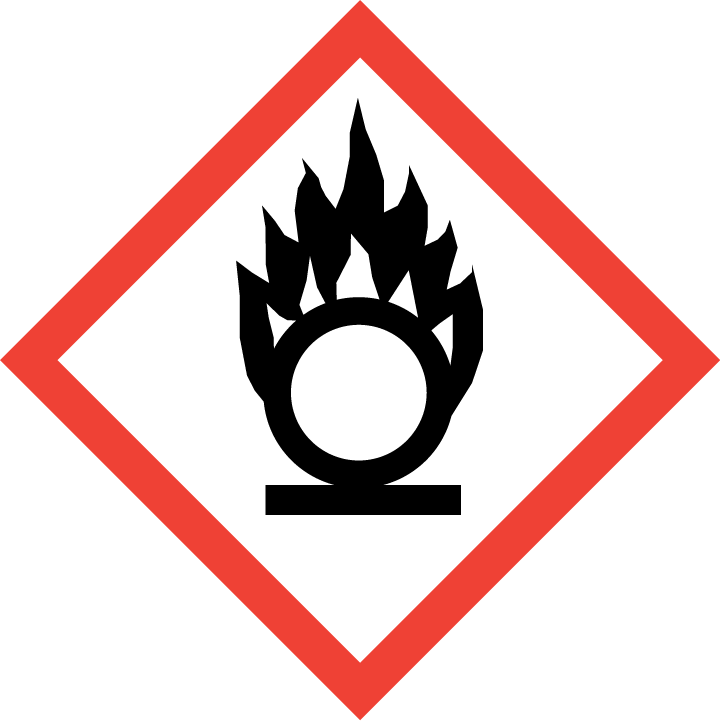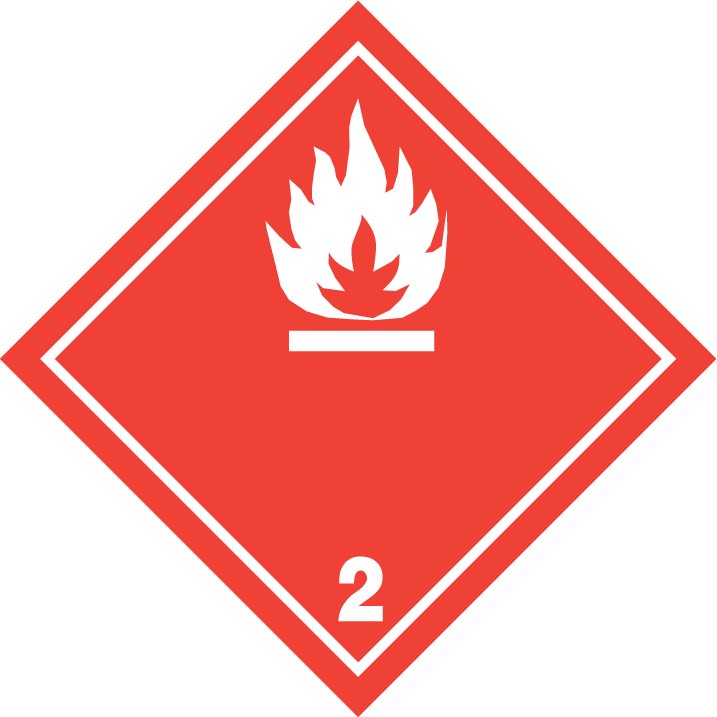SAFETY DATA SHEET
SHUR/Mount Mounting Medium, Toluene Based
1. IDENTIFICATION
Product Identifiers
Product Name:
SHUR/Mount Mounting Medium, Toluene Based
Other Names:
N/A
Product Number(s):
IA017
CAS Number:
-
Recommended use of the chemical and restriction on use
Laboratory use.
Mounting medium used to mount specimens in laboratories.
Mounting medium used to mount specimens in laboratories.
Company Details
ProSciTech Pty Ltd
11 Carlton Street
KIRWAN QLD 4817
Australia(07) 4773 9444www.proscitech.com
11 Carlton Street
KIRWAN QLD 4817
Australia(07) 4773 9444www.proscitech.com
Emergency Contact Details
ProSciTech Pty Ltd
11 Carlton Street
KIRWAN QLD 4817
Australia(07) 4773 9444www.proscitech.com
11 Carlton Street
KIRWAN QLD 4817
Australia(07) 4773 9444www.proscitech.com
2. HAZARDS IDENTIFICATION
Classification of the substance or mixture
GHS02 flame
Flam. Liq. 2 H225 Highly flammable liquid and vapour.
GHS08 health hazard
Repr. 1B H360 May damage fertility or the unborn child.
STOT RE 2 H373 May cause damage to organs through prolonged or repeated exposure.
Asp. Tox. 1 H304 May be fatal if swallowed and enters airways.
GHS07
Skin Irrit. 2 H315 Causes skin irritation.
Skin Sens. 1 H317 May cause an allergic skin reaction.
STOT SE 3 H336 May cause drowsiness or dizziness.
Flam. Liq. 2 H225 Highly flammable liquid and vapour.
GHS08 health hazard
Repr. 1B H360 May damage fertility or the unborn child.
STOT RE 2 H373 May cause damage to organs through prolonged or repeated exposure.
Asp. Tox. 1 H304 May be fatal if swallowed and enters airways.
GHS07
Skin Irrit. 2 H315 Causes skin irritation.
Skin Sens. 1 H317 May cause an allergic skin reaction.
STOT SE 3 H336 May cause drowsiness or dizziness.
Label Elements



Signal Words
Danger
Hazard Statement(s)
Highly flammable liquid and vapour.
Causes skin irritation.
May cause an allergic skin reaction.
May damage fertility or the unborn child.
May cause drowsiness or dizziness.
May cause damage to organs through prolonged or repeated exposure.
May be fatal if swallowed and enters airways.
Causes skin irritation.
May cause an allergic skin reaction.
May damage fertility or the unborn child.
May cause drowsiness or dizziness.
May cause damage to organs through prolonged or repeated exposure.
May be fatal if swallowed and enters airways.
Precautionary Statement(s)
Keep away from heat, hot surfaces, sparks, open flames and other ignition sources. No smoking.
Use explosion-proof electrical/ventilating/lighting/equipment.
Do not breathe dust/fume/gas/mist/vapours/spray.
Wear protective gloves / eye protection / face protection.
Ground/bond container and receiving equipment.
Use only non-sparking tools.
Take precautionary measures against static discharge.
Wash thoroughly after handling.
Use only outdoors or in a well-ventilated area.
Contaminated work clothing should not be allowed out of the workplace.
Obtain special instructions before use.
Do not handle until all safety precautions have been read and understood.
Use explosion-proof electrical/ventilating/lighting/equipment.
Do not breathe dust/fume/gas/mist/vapours/spray.
Wear protective gloves / eye protection / face protection.
Ground/bond container and receiving equipment.
Use only non-sparking tools.
Take precautionary measures against static discharge.
Wash thoroughly after handling.
Use only outdoors or in a well-ventilated area.
Contaminated work clothing should not be allowed out of the workplace.
Obtain special instructions before use.
Do not handle until all safety precautions have been read and understood.
Primary route(s) of entry
Not available.
Human Health
Inhalation:
Remove person to fresh air and keep comfortable for breathing.
Call a POISON CENTER/doctor if you feel unwell.
Call a POISON CENTER/doctor if you feel unwell.
Ingestion:
Immediately call a POISON CENTER/ doctor.Do NOT induce vomiting.
Eyes:
Not available.
Skin:
Take off immediately all contaminated clothing. Rinse skin with water/shower.
Specific treatment (see on this label).
Specific treatment (see on this label).
Environment
Dispose of contents/container in accordance with local/regional/national/international regulations.
3. COMPOSITION/INFORMATION ON INGREDIENTS
Name
CAS No.
Content (w/w)
Classification
toluene
108-88-3
50-100%
-
BBP
85-68-7
≤ 2,5%
-
mequinol
150-76-5
≤ 2,5%
-
4. FIRST AID MEASURES
Ingestion
If symptoms persist consult doctor.
Inhalation
In case of unconsciousness place patient stably in side position for transportation.
Skin Contact
Immediately wash with water and soap and rinse thoroughly.
Eye Contact
Rinse opened eye for several minutes under running water.
Other Information
Symptoms of poisoning may even occur after several hours; therefore medical observation for at least 48 hours after the accident.
5. FIREFIGHTING MEASURES
Suitable extinguishing equipment
CO₂, sand, extinguishing powder. Do not use water.
HAZCHEM
Not available.
Special protective equipment and precautions for fire fighters
6. ACCIDENTAL RELEASE MEASURES
Personal precautions, protective equipment and emergency procedures
Wear protective equipment. Keep unprotected persons away.
Environmental precautions
Prevent seepage into sewage system, workpits and cellars.
Inform respective authorities in case of seepage into water course or sewage system.
Inform respective authorities in case of seepage into water course or sewage system.
Methods and materials for containment and clean up
Absorb with liquid-binding material (sand, diatomite, acid binders, universal binders, sawdust).
Dispose contaminated material as waste according to item 13.
Ensure adequate ventilation.
Do not flush with water or aqueous cleansing agents
Dispose contaminated material as waste according to item 13.
Ensure adequate ventilation.
Do not flush with water or aqueous cleansing agents
7. HANDLING AND STORAGE
Precautions for safe handling
Ensure good ventilation/exhaustion at the workplace.
Open and handle receptacle with care.
Prevent formation of aerosols.
Open and handle receptacle with care.
Prevent formation of aerosols.
Conditions for safe storage
Store in a well-ventilated place.
Keep container tightly sealed.
Store in cool, dry conditions in well sealed receptacles.
Protect from heat and direct sunlight.
Protect against electrostatic charges.
Keep respiratory protective device available.
8. EXPOSURE CONTROLS/PERSONAL PROTECTION
Exposure Standards
Material
TWA ppm
TWA mg/m3
STEL ppm
STEL mg/m3
toluene
50 ppm
191 mg/m³
150 ppm
574 mg/m³
Engineering controls
Store locked up.
Store in a well-ventilated place. Keep container tightly closed.
Store in a well-ventilated place. Keep cool.
Store in a well-ventilated place. Keep container tightly closed.
Store in a well-ventilated place. Keep cool.
Personal protective equipment
Eye and face protection
Tightly sealed goggles.
Skin protection
Protective gloves.
The glove material has to be impermeable and resistant to the product/ the substance/ the preparation.
Due to missing tests no recommendation to the glove material can be given for the product/ the preparation/ the chemical mixture.
Selection of the glove material on consideration of the penetration times, rates of diffusion and the degradation.
Material of gloves.
The selection of the suitable gloves does not only depend on the material, but also on further marks of quality and varies from manufacturer to manufacturer. As the product is a preparation of several substances, the resistance of the glove material can not be calculated in advance and has therefore to be checked prior to the application.
Penetration time of glove material.
The exact break through time has to be found out by the manufacturer of the protective gloves and has to be observed.
The glove material has to be impermeable and resistant to the product/ the substance/ the preparation.
Due to missing tests no recommendation to the glove material can be given for the product/ the preparation/ the chemical mixture.
Selection of the glove material on consideration of the penetration times, rates of diffusion and the degradation.
Material of gloves.
The selection of the suitable gloves does not only depend on the material, but also on further marks of quality and varies from manufacturer to manufacturer. As the product is a preparation of several substances, the resistance of the glove material can not be calculated in advance and has therefore to be checked prior to the application.
Penetration time of glove material.
The exact break through time has to be found out by the manufacturer of the protective gloves and has to be observed.
Body protection
Keep away from foodstuffs, beverages and feed.
Immediately remove all soiled and contaminated clothing
Wash hands before breaks and at the end of work.
Store protective clothing separately.
Avoid contact with the skin.
Avoid contact with the eyes and skin.
Immediately remove all soiled and contaminated clothing
Wash hands before breaks and at the end of work.
Store protective clothing separately.
Avoid contact with the skin.
Avoid contact with the eyes and skin.
Respiratory protection
In case of brief exposure or low pollution use respiratory filter device. In case of intensive or longer exposure use self-contained respiratory protective device.
9. PHYSICAL AND CHEMICAL PROPERTIES
General information
Appearance
Clear liquid.
Odour
Characteristic
pH
Not determined.
Vapour Pressure
at 20 °C: 29 hPa
Density
at 20 °C: 3.2 g/cm³
Boiling Point
110 °C
Melting Point
Undetermined.
Solubility
Not miscible or difficult to mix with water.
Specific Gravity of Density
Not determined.
Flash Point
< 1 °C
Flammable (Explosive) Limits
Explosion limits:
Lower: 1.2 Vol %
Upper: 7.0 Vol %
Lower: 1.2 Vol %
Upper: 7.0 Vol %
Ignition Temperature
535 °C
Formula
Not available.
10. STABILITY AND REACTIVITY
Reactivity
No further relevant information available.
Chemical stability
No decomposition if used according to specifications.
Possibility of hazardous reactions
No dangerous reactions known.
Conditions to avoid
No further relevant information available.
Incompatible materials
No further relevant information available.
11. TOXICOLOGICAL INFORMATION
Acute effects
108-88-3 toluene
Oral LD50 5000 mg/kg (rat)
Dermal LD50 12124 mg/kg (rabbit)
Inhalative LC50/4 h 5320 mg/l (mouse)
85-68-7 BBP
Oral LD50 2330 mg/kg (rat)
Oral LD50 5000 mg/kg (rat)
Dermal LD50 12124 mg/kg (rabbit)
Inhalative LC50/4 h 5320 mg/l (mouse)
85-68-7 BBP
Oral LD50 2330 mg/kg (rat)
Eye contact
No irritating effect.
Skin contact
Irritant to skin and mucous membranes.
Ingestion
No further relevant information available.
Inhalation
Irritant to skin and mucous membranes.
Toxicity and irritation
The product shows the following dangers according to the calculation method of the General EU Classification
Guidelines for Preparations as issued in the latest version:
Irritant.
Guidelines for Preparations as issued in the latest version:
Irritant.
12. ECOLOGICAL INFORMATION
Ecotoxicity
Harmful to aquatic organisms.
Persistence and degradability
No further relevant information available.
Bioaccumulative potential
No further relevant information available.
Other adverse effects
Harmful to fish.
13. DISPOSAL CONSIDERATIONS
General information
Must not be disposed together with household garbage. Do not allow product to reach sewage system.
Uncleaned packaging:
Recommendation: Disposal must be made according to official regulations.
Uncleaned packaging:
Recommendation: Disposal must be made according to official regulations.
14. TRANSPORT INFORMATION
ADG label required

HAZCHEM
Not available.
UN Number
UN1993
Proper shipping name
1993 FLAMMABLE LIQUID, N.O.S. (TOLUENE)
Transport hazard class
3 Flammable liquids.
Packing group
II
Environmental hazard
No information available.
Special precautions for users
Warning: Flammable liquids.
Danger code (Kemler): 33
EMS Number: F-E,S-E
Stowage Category B
Danger code (Kemler): 33
EMS Number: F-E,S-E
Stowage Category B
Additional information
Limited quantities (LQ) 1L
Excepted quantities (EQ) Code: E2
Maximum net quantity per inner packaging: 30 mL
Maximum net quantity per outer packaging: 500 mL
Transport category 2
Tunnel restriction code D/E
Excepted quantities (EQ) Code: E2
Maximum net quantity per inner packaging: 30 mL
Maximum net quantity per outer packaging: 500 mL
Transport category 2
Tunnel restriction code D/E
15. REGULATORY INFORMATION
Poisons Schedule Number
108-88-3 toluene S6
67-64-1 Acetone, Reagent Grade S5
67-64-1 Acetone, Reagent Grade S5
Other Information
Australian Inventory of Chemical Substances
108-88-3 toluene
85-68-7 BBP
2530-85-0 3-trimethoxysilylpropyl methacrylate
150-76-5 mequinol
67-64-1 Acetone, Reagent Grade
106-42-3 p-xylene
108-88-3 toluene
85-68-7 BBP
2530-85-0 3-trimethoxysilylpropyl methacrylate
150-76-5 mequinol
67-64-1 Acetone, Reagent Grade
106-42-3 p-xylene
16. OTHER INFORMATION
SDS preparation date
27 November 2024
Comments
This information is based on our present knowledge. However, this shall not constitute a guarantee for any specific product features and shall not establish a legally valid contractual relationship.
This Safety Data Sheet (SDS) has been prepared in compliance with the Preparation of Safety Data Sheets for Hazardous Chemicals Code of Practice February 2016. It is the user's responsibility to determine the suitability of this information for adoption of necessary safety precautions. The information published in this SDS has been compiled from the publications listed in Section 16: to the best of our ability and knowledge these publications are considered accurate. We reserve the right to revise Safety Data Sheets as new information becomes available. Copies may be made for non-profit use.